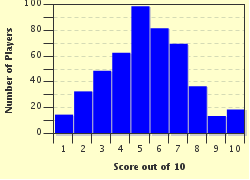Quiz Answer Key and Fun Facts
1. First of all, let's look at the current ratio. This can be calculated by current assets/? :1
2. Next is the acid test ratio. This is exactly the same as the current ratio, except what value should be taken away from the current assets?
3. Now onto stock turnover. This shows how many times a company uses stock over a certain time period. Stock turnover = cost of sales/ ? (Note: stock relates to inventories and is not related to shares).
4. Debtors' collection period (or debtor days) measures how long on average a company's debtors take to pay off their debts to the company. This can be calculated by debtors/? x 365?
5. Asset turnover measures how effectively an asset held by a business can generate sales for the company. Which of these can be used to divide sales turnover by?
6. Now onto gearing. This method analyses the relationship between borrowing money and equity through shares. How is gearing presented?
7. Now onto profitability ratios. What do you divide gross profit by to work out the gross profit margin?
8. Dividend yield is the amount of money that an investor typically gets back through dividends. Which of these is a typical dividend yield for any company?
9. The ROCE equation can be calculated by dividing operating profit with capital employed. What does the R stand for in ROCE?
10. Finally, for the break-even ratio. What do you divide by Contribution per unit to get the final figure?
Source: Author
mick_is_god
This quiz was reviewed by FunTrivia editor
TabbyTom before going online.
Any errors found in FunTrivia content are routinely corrected through our feedback system.


